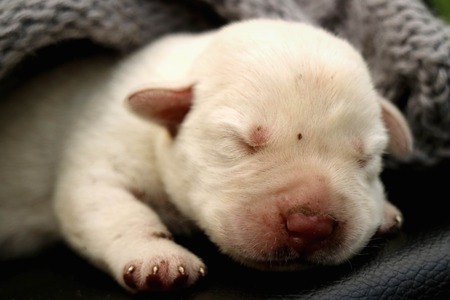1. Understanding Your Dog’s Needs
Every dog is different, and factors like breed, age, and health play a role in determining the best sleeping arrangement. Some dogs thrive indoors, while others are more comfortable outside. Understanding your dogs specific needs will help you make the best decision.
Breed Considerations
Certain breeds are better suited for outdoor sleeping due to their thick fur and natural resilience to weather conditions. Others, especially small or short-haired breeds, may struggle with temperature extremes.
| Breed Type | Best Sleeping Arrangement |
|---|---|
| Large, thick-coated breeds (e.g., Siberian Husky, Bernese Mountain Dog) | Can tolerate outdoor sleeping in appropriate conditions |
| Small or short-haired breeds (e.g., Chihuahua, Greyhound) | Better suited for indoor sleeping |
| Brachycephalic breeds (e.g., Bulldog, Pug) | Indoor sleeping recommended due to breathing concerns |
Age and Health Factors
Puppies and senior dogs often need extra warmth and comfort that an indoor environment provides. Dogs with health conditions such as arthritis or respiratory issues should also be kept inside where temperatures are stable.
Puppies
Puppies have developing immune systems and need a warm, safe place to sleep indoors. Exposure to cold or extreme weather can be harmful to their health.
Seniors
Aging dogs may experience joint pain and mobility issues, making a soft and warm indoor bed the best option for them.
Dogs with Medical Conditions
If your dog has allergies, breathing difficulties, or joint pain, an indoor environment will provide better air quality and a controlled temperature that supports their well-being.
2. Pros and Cons of Indoor Sleeping
Letting your dog sleep indoors has its advantages and challenges. It provides comfort, safety, and strengthens your bond with your pet. However, it may also require additional training and space adjustments to ensure a smooth experience for both you and your dog.
Pros of Indoor Sleeping
✔ Comfort and Security
Indoor sleeping means your dog is protected from harsh weather conditions such as extreme heat, cold, or heavy rain. Your pet will have a cozy space to rest without worrying about external dangers like predators or traffic.
✔ Stronger Bond with Your Dog
Having your dog sleep indoors allows for more interaction and closeness. Your pet feels more connected to you, which can help reduce anxiety and strengthen the human-animal bond.
✔ Better Health Monitoring
When your dog sleeps inside, you can easily monitor their health. You’ll notice changes in behavior, appetite, or sleeping patterns that might indicate an underlying issue.
Cons of Indoor Sleeping
✘ Requires Training
If your dog isn’t used to indoor sleeping, they may need training to adapt to house rules. This includes potty training, learning where to sleep, and avoiding destructive behavior.
✘ Space Considerations
Not all homes have enough space for a dedicated sleeping area for a dog, especially if you have a large breed. You may need to rearrange furniture or create a designated spot for your pet’s bed.
✘ Potential Allergies or Odors
If anyone in the household has pet allergies, indoor sleeping could trigger symptoms. Additionally, regular cleaning is necessary to manage pet hair and odors.
Quick Comparison: Indoor Sleeping Pros & Cons
| Pros | Cons |
|---|---|
| Keeps your dog safe from weather and outdoor dangers | Might require training for indoor behavior |
| Strengthens the bond between you and your pet | Takes up space in the home |
| Easier to monitor health and well-being | Potenial allergies or odors in the house |
![]()
3. Pros and Cons of Outdoor Sleeping
Outdoor sleeping can be great for certain breeds that thrive in outdoor environments, but it also comes with risks like weather exposure, predators, and isolation. Some dogs are naturally suited to sleeping outside, especially those bred for guarding, herding, or working in outdoor conditions. However, it’s important to weigh the benefits and drawbacks before deciding if outdoor sleeping is right for your dog.
Pros of Outdoor Sleeping
- More Space to Roam: Dogs that sleep outside often have more room to move around, which can be beneficial for active breeds.
- Natural Environment: Some breeds, such as Siberian Huskies and Great Pyrenees, are built for outdoor living and thrive in fresh air.
- Security Benefits: Outdoor dogs can serve as natural watchdogs, alerting you to any unusual activity around your home.
- Less Indoor Mess: If your dog sheds a lot or has a tendency to make messes inside, keeping them outdoors may reduce cleanup efforts.
Cons of Outdoor Sleeping
- Weather Exposure: Extreme heat or cold can be dangerous for dogs without proper shelter.
- Predators and Safety Risks: Depending on where you live, your dog may be at risk from wildlife or even theft.
- Loneliness and Isolation: Dogs are social animals and may feel lonely or anxious if left outside alone too often.
- Health Concerns: Being outdoors increases the chances of exposure to parasites like fleas, ticks, and mosquitoes.
Comparison of Pros and Cons
| Pros | Cons |
|---|---|
| More space to roam | Exposure to harsh weather |
| Bred-for-it breeds thrive outdoors | Pests like fleas and ticks |
| Adds security benefits | Puts dog at risk from predators |
| Keeps indoor spaces cleaner | Dogs may feel lonely or anxious |
Is Outdoor Sleeping Right for Your Dog?
If you’re considering letting your dog sleep outside, make sure they have proper shelter, access to clean water, and protection from extreme weather conditions. It’s also crucial to consider their breed, temperament, and health needs before making this decision.
4. Safety Considerations for Both Options
Whether your dog sleeps inside or outside, their safety is a top priority. Explore the key factors to ensure their area is secure, comfortable, and protected.
Indoor Sleeping Safety
Creating a Secure Space
Dogs sleeping indoors should have a designated space where they feel safe. A crate, dog bed, or a cozy corner can provide comfort and security.
Avoiding Household Hazards
Keep electrical cords, toxic plants, and small objects out of reach. Ensure they cant access harmful foods or chemicals that could be dangerous if ingested.
Temperature Control
Maintain a comfortable indoor temperature. Avoid placing their bed near vents, heaters, or drafty windows to prevent discomfort.
Outdoor Sleeping Safety
Shelter and Protection
If your dog sleeps outside, they need a well-insulated doghouse that shields them from extreme temperatures, wind, and rain.
Secure Fencing
A sturdy fence prevents your dog from wandering and keeps out potential threats like wild animals or stray dogs.
Weather Considerations
Certain breeds tolerate outdoor sleeping better than others. Always monitor weather conditions to ensure your dog stays warm in winter and cool in summer.
Comparison: Indoor vs. Outdoor Sleeping Safety
| Factor | Indoor Sleeping | Outdoor Sleeping |
|---|---|---|
| Shelter & Comfort | Controlled environment with cozy bedding | Requires insulated shelter for protection |
| Pest & Wildlife Risks | No exposure to outdoor pests or wild animals | Possible risk of fleas, ticks, or wildlife encounters |
| Temperature Control | Easier to maintain consistent temperature | Might require extra care during extreme weather |
| Security & Safety | No risk of escape or external threats | Adequate fencing needed to prevent escape & intruders |
| Noises & Disturbances | Lowers risk of outside noises causing distress | Noisy surroundings might lead to anxiety or barking |
5. Making the Right Decision for Your Dog
Choosing between indoor and outdoor sleeping for your dog depends on several factors. Every dog has different needs, and what works for one may not be ideal for another. By evaluating your dogs lifestyle, home environment, and specific needs, you can make the best choice for their comfort and well-being.
Understanding Your Dog’s Lifestyle
Your dog’s daily routine plays a big role in determining where they should sleep. Consider the following:
- Activity Level: Highly active dogs that spend a lot of time outdoors may enjoy sleeping outside, while less active or older dogs may prefer a cozy indoor spot.
- Social Needs: Some dogs thrive on human interaction and may feel lonely or anxious if left outside overnight.
- Breed Considerations: Certain breeds are better suited for outdoor living due to their thick fur and natural resilience, while others need warmth and comfort indoors.
Evaluating Your Home Environment
Your home setup also affects where your dog should sleep. Ask yourself these questions:
- Do you have a safe and secure yard? A fenced-in area is essential if your dog sleeps outside.
- What is the climate like? Extreme temperatures can be dangerous for outdoor dogs without proper shelter.
- Are there potential dangers? Wildlife, harsh weather, or neighborhood noise can make outdoor sleeping less ideal.
Meeting Your Dog’s Specific Needs
Every dog has unique requirements based on age, health, and personality. Here’s a quick comparison:
| Indoor Sleeping | Outdoor Sleeping | |
|---|---|---|
| Best For | Puppies, senior dogs, small breeds, dogs with health conditions | Larger breeds with thick coats, working or guard dogs with proper shelter |
| Shelter & Comfort | Controlled temperature, soft bedding | Requires insulated dog house, protection from elements |
| Safety Concerns | Minimal risks indoors | Pests, wildlife, extreme weather risks |
| Human Interaction | More bonding time with family | Puts distance between dog and owner at night |
| Security Benefits | Keeps dog protected inside home | Might deter intruders but needs supervision |
Final Considerations
The right decision ultimately depends on your dogs personality and well-being. If you choose outdoor sleeping, ensure they have a warm, dry shelter with access to food and water. If you opt for indoor sleeping, create a comfortable space that makes them feel secure. Paying attention to their behavior and adjusting as needed will help keep them happy and healthy.

